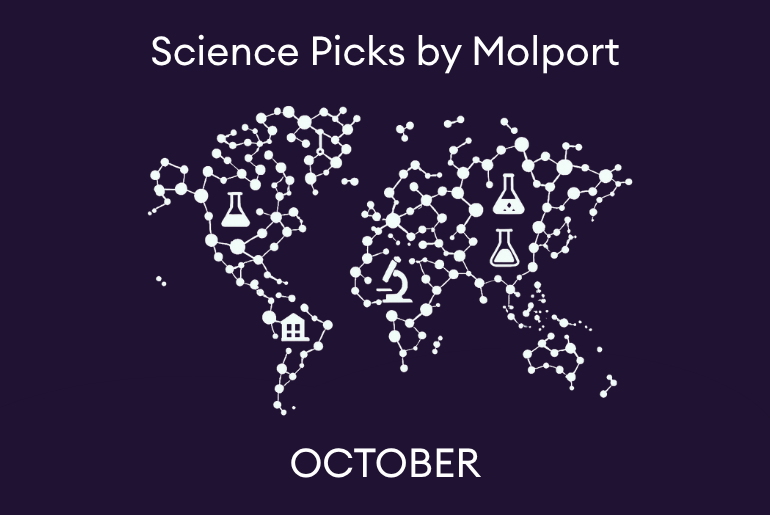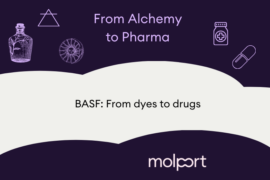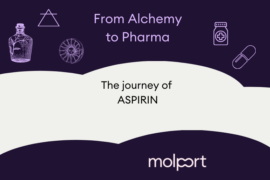October 31st
Knowledge and Structure-Based Drug Design of 15-PGDH Inhibitors
https://pubs.acs.org/doi/abs/10.1021/acs.jmedchem.5c01231
Abstract
PGE2 plays important roles in immune cell function and in potentiating tissue regeneration. 15-PGDH is the key enzyme involved in inactivation of PGE2 and its inhibition therefore provides valuable therapeutic opportunity. We have solved the first cocrystal structure of 15-PGDH bound to small molecule inhibitors, enabling us to efficiently investigate and understand the key functionalities required for potency. Rational structure-based design coupled with a host of advanced computational methods, including FEP+ and WaterMap, were used to develop novel series of 15-PGDH inhibitors. Of note, a machine-learning (ML) model trained with potencies predicted by FEP+ yielded a powerful tool to guide synthetic priority across a large virtual chemical library. Ultimately, a lead compound demonstrated elevation of colonic PGE2 following IP administration in mice, consistent with our therapeutic hypothesis.
October 28th
Discovery of a Novel Series of iso-Indolinone-Based Glutarimides as Highly Efficacious and Selective IKZF2 Molecular Glue Degraders
https://pubs.acs.org/doi/abs/10.1021/acs.jmedchem.5c00668
Abstract
Immunosuppressive Tregs, regulated by IKZF2 (Helios), promote tumor immune evasion and resistance to immune checkpoint therapies (ICTs). Targeting IKZF2 degradation offers a promising cancer immunotherapy approach. We developed a novel series of iso-indolinone-based glutarimides, identifying compound 55 as a potent, selective IKZF2 degrader with >90% Dmax in Jurkat cells, outperforming benchmarks DKY709 and PVTX-405. It exhibits strong selectivity over IMiD neo-substrates, favorable solubility, metabolic stability, and oral bioavailability in rodents. PK/PD studies confirmed profound, persistent IKZF2 degradation in mouse spleen and thymus after a single oral dose. As a promising early-stage tool, 55 provides a foundation for further preclinical evaluation in cancer immunotherapy.
October 23rd
Discovery of Cell-Permeable Macrocyclic Cyclin A/B RxL Inhibitors that Demonstrate Antitumor Activity
https://pubs.acs.org/doi/abs/10.1021/acs.jmedchem.5c00253
Abstract
The cyclin-dependent kinase (CDK)/retinoblastoma protein (RB)/early region 2 binding factor (E2F) axis forms the core transcriptional machinery driving cell cycle progression. Alterations in RB1 or other pathway members occur in many cancers, resulting in heightened oncogenic E2F activity. The activity of E2F is regulated by RxL-mediated binding to the hydrophobic patch (HP) of Cyclin A; blocking this interaction results in the hyperactivation of E2F and synthetic lethality in E2F-driven tumors. While mechanistically differentiated and potentially more selective than blocking CDK activity (e.g., CDK2 or CDK4 inhibitors), the Cyclin A/E2F RxL interaction was deemed undruggable. Utilizing structure-based design, we have discovered a family of cell-permeable macrocyclic Cyclin A/B RxL inhibitors that show potent and selective activity against RB1/E2F-dysregulated cancer cell lines. Lead compound 34 demonstrated proof-of-concept efficacy via intraperiotoneal (IP) administration in mouse cell line-derived xenograft (CDX) tumor models.
October 20th
Property-Based Prediction Uncovers Intestinal Excretion as an Elimination Route of Small-Molecule Drugs
https://pubs.acs.org/doi/abs/10.1021/acs.jmedchem.5c01251
Abstract
Hepatic and renal pathways are traditionally considered the primary routes of drug clearance. However, emerging evidence highlights the significant role of direct intestinal excretion of unchanged drugs and metabolites. Intestinal excretion is often unrecognized due to complications arising from unabsorbed drugs and direct biliary excretion. Consequently, the extent and mechanisms of intestinal excretion remain systematically underexplored. Using bile duct cannulated rats, we investigated intestinal excretion for a library of drugs and proposed a predicative decision tree based on molecular descriptors. Mechanistically, passive permeability and efflux transporters emerged as key drivers of intestinal excretion in rats. We also demonstrated that modulating a single functional group can alter the clearance pathways between intestinal and biliary excretion. The insights into intestinal excretion as a major clearance pathway for metabolically stable small-molecule drugs provide a more comprehensive understanding for drug clearance and offer new considerations for drug design and pharmacokinetic assessment.
October 14th
Discovery and In-Vivo Characterization of Kv7 Channel Openers through a Phenotypic Approach
https://pubs.acs.org/doi/abs/10.1021/acs.jmedchem.5c00945
Abstract
Despite the availability of approximately 30 antiseizure drugs (ASDs), epilepsy remains a major unmet clinical need, with approximately 30% of epileptic patients experiencing uncontrolled seizures despite an adequately chosen treatment. Polypharmacology is a common feature of many ASDs and polypharmacy is a usual practice to treat epileptic patients. Several approved ASDs were originally discovered through phenotypic screening in rodent models of seizures. To overcome the technical and ethical challenges associated with animal testing, we developed an in vitro assay that recapitulates seizure-related neuronal hyperexcitability phenotypes in a dish. Using this unbiased assay, a new class of urea compounds was discovered. Through optimization, compound 31 (IDOR-1104–0086) was identified as an orally bioavailable and brain-penetrant compound with in vivo efficacy in two rodent models of epilepsy and a favorable tolerability profile. Target deconvolution revealed that these ureas exert their antiseizure effects through activation of KV7 potassium channels, a mechanism consistent with the modulation of neuronal excitability.
October 9th
Discovery of Gut-Targeted GPR40 Agonist K-757 and GPR119 Agonist K-833, a Combination Treatment for Metabolic Disorders
https://pubs.acs.org/doi/abs/10.1021/acs.jmedchem.5c01030
Bariatric surgery provides long-term and robust weight loss in most patients. One leading hypothesis for this profound efficacy focuses on the increased activation of gut enteroendocrine cells (EECs), resulting in enhanced secretion of satiety hormones. We describe herein an approach using a combination of gut-targeted small molecules to stimulate intestinal nutrient receptors and mirror some of the hormone effects of bariatric surgery. In preclinical studies, administration of GPR40 agonist K-757 in combination with GPR119 agonist K-833 resulted in robust increases in the level of circulating hormones. In initial clinical studies, pharmacokinetics and pharmacodynamics for each molecule were characterized and largely recapitulated the effects of the individual compounds in mice.
October 6th
Discovery of BI-2493, a Pan-KRAS Inhibitor Showing In Vivo Efficacy
https://pubs.acs.org/doi/full/10.1021/acs.jmedchem.5c00576
Abstract
KRAS is one of the most highly validated cancer targets. Here we describe the design and synthesis of two reversible pan-KRAS inhibitors, BI-2865 and BI-2493. From our KRASG12C inhibitor program, we identified BI-2865, a potent noncovalent KRAS inhibitor that showed cellular activity against a broad spectrum of KRAS alleles and selectivity against HRAS and NRAS. Spirocyclization led to the discovery of BI-2493, a highly rigid analogue exhibiting better potency, metabolic stability, and permeability. BI-2493 shows in vivo efficacy in various KRAS mutant and KRAS wild-type amplified xenograft models and represents a promising starting point for further optimization.
October 1st
Structure–Activity Relationship Guided Scaffold Hopping Resulted in the Identification of GLPG4970, a Highly Potent Dual SIK2/SIK3 Inhibitor
https://pubs.acs.org/doi/abs/10.1021/acs.jmedchem.5c01401
Abstract
Inhibition of salt-inducible kinases (SIKs) SIK1, SIK2, and SIK3 represents a new potential therapeutic approach for autoimmune and inflammatory disease treatment via modulation of pro-inflammatory and immunoregulatory pathways, particularly inhibition of SIK2 and SIK3. After discovering a new chemotype for SIK inhibition, further optimization of potency, selectivity, ADMET and PK properties resulted in a 1,6-naphtyridine containing molecule GLPG4876 (7). However, 7 was clastogenic when examined in vivo in rat micronucleus assays, preventing further development. Overlay of 7 with GLPG3970 (6) within the SIK3 protein structure inspired the design of pyridine derivatives, leading to the identification of GLPG4970 (8). Compound 8 was negative in genotoxicity screening assays and demonstrated potent SIK2/SIK3 inhibition, for which isoform selectivity was determined in a cellular context. Compound 8 displayed improved potency compared with previously reported SIK inhibitors in biochemical and phenotypic cellular assays, and showed dose-dependent activity in disease relevant mouse pharmacological models of colitis.





